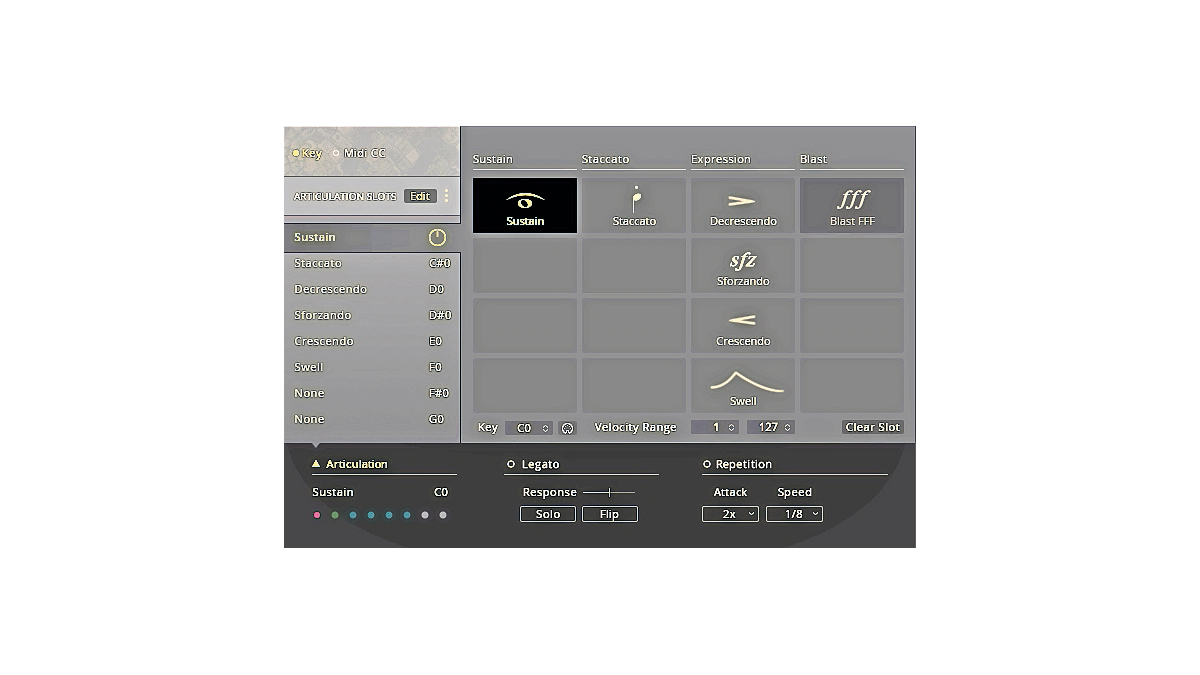MusicRadar Verdict
These libraries represent the most sophisticated orchestral sample collection NI have released to date.
Pros
- +
Fantastic sounds, and lots of them.
Cons
- -
None.
MusicRadar's got your back

Native Instruments Symphony Series Brass Collection

Native Instruments Symphony Series Brass Collection
The sheer range of software titles offered by Native Instruments affords the German company a unique place in our industry.
Via synths, effects suites and sample libraries aplenty, NI aims to have your sonic bases covered. And it is now striding into more sophisticated territory with its latest libraries.
The Symphony Series Brass Collection, developed in partnership with Soundiron, bundles two orchestral libraries of Solo and Ensemble Brass groups (also available separately) which are aimed primarily at media composers seeking a new level of authenticity from NI's orchestral sample provision.
While the Solo library provides single players, the Ensemble library captures a 32-piece brass orchestra across the same four instrument groups - Trumpets, Trombones, Horns and Bass Brasses (Tubas and Euphoniums). In this library you'll find over 100 articulations in total, with the file structure common to both libraries allowing you to easily hunt down chosen performance styles.
Both libraries also provide four discrete microphone positions, with a main Stereo mix further supplemented by optional Close, Mid and Far alternatives, which are easily blended by Volume and Pan sliders.
The Performance page is where most settings are configured, with a Dynamics dial dominating the upper section. This is mapped to the modulation wheel and controls a combination of volume and performance intensity. Below this, further sliders control Attack, Release, Tightness and Motion, all of which help add further layers of realism. Further down, the Articulation area displays an LED-style light to show the currently loaded playing style.
Neatly, clicking the triangle here brings up a menu of the current Articulations, with a click of the Edit button further expanding this window, to allow you to assign all possible articulations for the current instrument to your chosen key triggers. You can go further by assigning velocity ranges and MIDI controllers here too.
Want all the hottest music and gear news, reviews, deals, features and more, direct to your inbox? Sign up here.
"NI aims to get you into rich-sounding territory as fast as possible, so the default sound for any patch is lush."
Playback comes next, letting you choose a Natural setting, or a Varispeed option, which provides real-time time-stretching, to let you choose playback speed. The Sync alternative is useful if you need a patch to clock to tempo, such as a swell which needs to grow in volume through a bar. Up to eight round robins are provided within this library, which are displayed as you repeatedly trigger notes.
The Repetition section is useful too, forcing a single key strike to be repeated two or three times. There's even a Run option, which repeatedly triggers notes as you hold down a single note or chord. Accordingly, you can quickly create patterns in 1/8th or 1/16th notes, which can even feature an accent if you like.
Effects aplenty
The Mixer page provides optional internal effects, as well as the alternative microphone volume and pan sliders. To the left, you'll see EQ, Reverb and Compression & Filter sections. Click the button next to these to switch them on, then configure each effect's parameters at will. The EQ provides basic but effective Low, Mid and High frequency sections, with sweepable bandwidth in the Mid band.
The Reverb provides ten algorithms with tweakable Size, Delay and high/low filtering options, while the Compressor offers Threshold, Ratio, Attack and Release parameters. Lastly, the resonant low-pass filter takes the whole library into less conventional sonic territory if you're looking for Brass with a twist.
All of this would pale into insignificance if the recordings at the heart of these libraries weren't up to scratch. Fortunately, for the Ensemble in particular, this is far from the case.
NI wants to get you into polished, rich-sounding territory as quickly as possible here, so the starting sound for any patch will be lush. The default stereo mix is supplemented by plenty of natural reverb, so if you want 'smaller' sounds, you need to select your own microphone blend, with plenty of Close signal included.
However, most of the time, the natural richness here is welcome. As with all orchestral libraries, realism relies on the quality of the recordings alongside the ways in which they can be manipulated in real-time to generate phrases. Here, with controllers mapped to the Dynamics rotary, as well as those for Attack, Release, Tightness and Motion, the wonderful unpredictability of live players is invoked.
The 'strength in numbers' aspect of the Ensemble library edges it in front of the Solo equivalent for me, but the smaller library is still capable of great results. The Solo Legato patches are particularly noteworthy for their melodic tone and, usefully, they're capable of both Solo and Duet performances. It will be interesting to see if NI develops this series to cover winds and string sections too... I do hope so.